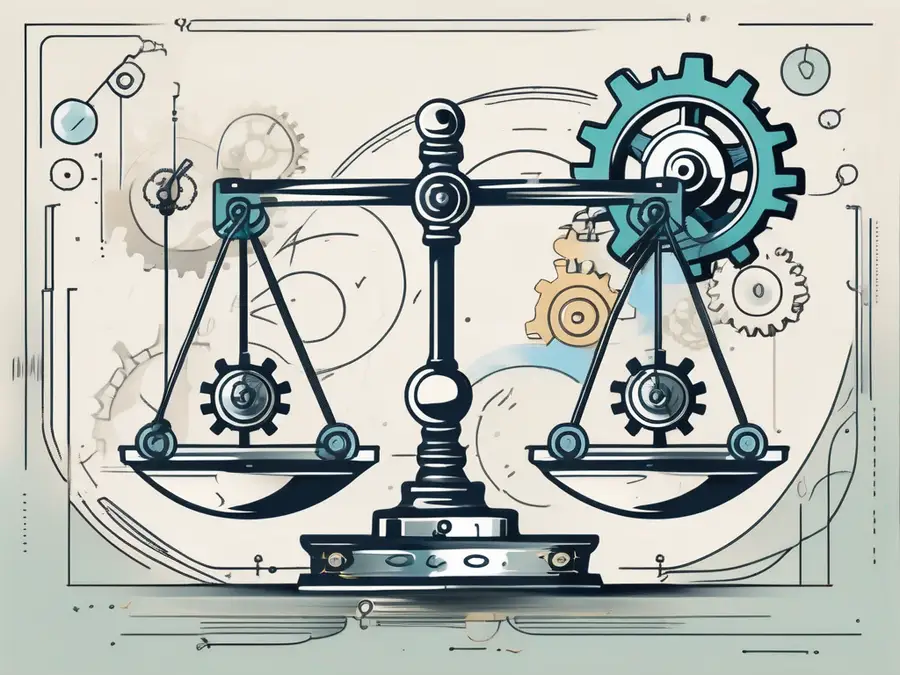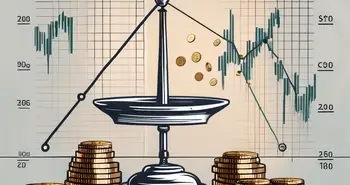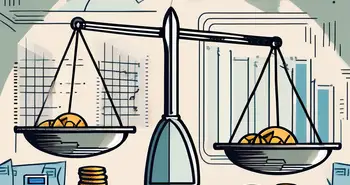Gearing Ratio: How Leverage Impacts Your Investments

Understanding the gearing ratio is crucial for any investor looking to leverage their financial opportunities effectively. Over my years in finance, I've encountered many investors who either embrace or shy away from gearing, often without fully understanding its implications. This article delves into the nuances of the gearing ratio, helping you make informed investment decisions by leveraging this powerful metric.
Defining Gearing Ratio
The Basics of Gearing Ratio
At its core, the gearing ratio is a financial metric used to assess a company's financial leverage. It helps stakeholders understand the proportion of debt relative to equity in the firm's capital structure. Essentially, the gearing ratio provides insights into how much of the company is financed through borrowing compared to shareholders' equity.
In practical terms, a higher gearing ratio indicates that a company relies significantly on debt to fund its operations, whereas a lower ratio signifies a more conservative approach with a greater reliance on equity. This balance can influence not only the company's risk profile but also its potential for growth. For instance, companies in capital-intensive industries, such as utilities or telecommunications, may naturally exhibit higher gearing ratios due to the substantial investments required for infrastructure. Conversely, startups or businesses in less capital-intensive sectors might maintain lower ratios to mitigate financial risk as they seek to establish a stable revenue stream.
Components of Gearing Ratio
The gearing ratio can be calculated in various ways, but the most common formula is:
- Debt-to-Equity Ratio = Total Liabilities / Shareholders' Equity
- Equity Ratio = Shareholders' Equity / Total Assets
Understanding these components allows investors to gain a clearer picture of a company's financial stability. Both ratios can highlight how well a company manages its debt and how much financial risk it carries. Additionally, it is important to consider the context in which these ratios are analyzed. For example, a company with a high gearing ratio might be viewed negatively in a volatile market, where economic downturns can lead to increased default risks. However, in a stable or growing economy, such a ratio could be seen as an opportunity for higher returns on equity, as the company leverages debt to finance expansion and capitalize on market opportunities.
The Relationship Between Gearing Ratio and Leverage
How Gearing Ratio Measures Financial Leverage
Leverage, in a financial context, refers to the use of debt to acquire additional assets. The gearing ratio is a critical measure that indicates how effectively a company utilizes leverage to enhance its returns. A well-calculated leverage strategy can magnify profits during good times but can also exacerbate losses when conditions decline. The gearing ratio is typically calculated as the proportion of a company’s debt to its equity, providing a clear snapshot of the financial structure and risk profile of the business.
Throughout my career, I’ve seen companies that judiciously use leverage post significant returns, while others collapsed under the weight of their debts. Understanding and addressing your gearing ratio can be the line between success and failure in investing. It’s essential for investors to analyze not just the current ratio but also trends over time, as shifts in the ratio can signal changes in management strategy or market conditions. Companies that consistently maintain a healthy balance between debt and equity often find themselves better positioned to weather financial storms.
Risks and Rewards of High Gearing Ratios
While high gearing ratios can enhance returns when investments perform well, they also entail significant risks. Companies with high debt levels face challenges, especially during economic downturns when cash flows might dwindle. The ability to service debt becomes paramount, and any disruption in revenue can lead to dire consequences, including default or bankruptcy. Investors must remain vigilant, as a high gearing ratio can often mask underlying weaknesses in a company’s operational efficiency or market positioning.
- A high gearing ratio can lead to increased volatility in earnings.
- In adverse conditions, the company may struggle to meet debt obligations.
- Equity investors may face dilution if management decides to raise funds through issuing additional shares instead of paying down debt.
Moreover, the perception of risk associated with high gearing can affect a company's stock price and its ability to raise additional capital. Investors may demand higher returns for taking on the perceived risk, which can increase the cost of equity. This creates a cycle where the company’s financial health is further strained, making it crucial for management to maintain transparent communication with stakeholders about their leverage strategy and risk management practices. Ultimately, while leveraging can be a powerful tool for growth, it requires careful navigation to avoid the pitfalls that can arise from excessive debt exposure.
Gearing Ratio in the Context of Investments
Gearing Ratio and Stock Investments
For stock investors, the gearing ratio can be a significant indicator of financial health. It helps gauge whether the company is positioned to weather economic fluctuations or if it may be overly reliant on debt. Companies in sectors with stable cash flows, such as utilities, might carry higher gearing ratios compared to startups in dynamic sectors.
Gearing Ratio and Bond Investments
When evaluating bond investments, investors must scrutinize the issuer's gearing ratio. A high gearing ratio may imply elevated risk, which can lead to credit rating downgrades and increased yields demanded by investors.
During my tenure analyzing bonds, I found that tracking changes in a company's gearing ratio over time gives vital insights into its creditworthiness and overall financial trajectory.
Interpreting Gearing Ratios
What a Low Gearing Ratio Means
A low gearing ratio typically suggests that a company is more financially stable since it relies less on debt. This could mean lower financial risk, providing shareholders with a cushion during downturns. However, overly cautious companies might miss out on high-return opportunities.
What a High Gearing Ratio Means
On the contrary, a high gearing ratio often mirrors aggressive growth strategies. It indicates that a company is pursuing expansion using debt financing. While this approach can yield significant returns, it also increases financial risk. Hence, it’s crucial to assess the context and sector standards when interpreting these ratios.
How to Use Gearing Ratios to Make Investment Decisions
Assessing Financial Health with Gearing Ratios
Using gearing ratios can empower investors to make sound decisions by providing clarity on financial health. When assessing potential investments, evaluate the gearing ratio in conjunction with other financial metrics such as profitability, cash flows, and market conditions.
Gearing Ratios and Investment Strategy
Additionally, incorporating gearing ratios into your investment strategy allows for informed risk assessment. Diversifying your portfolio across sectors with varying gearing ratios can mitigate risks effectively. For example, balancing high-gearing utility stocks with low-gearing tech companies can provide a buffer during economic fluctuations.
FAQ
What is a gearing ratio?
The gearing ratio is a financial measure that indicates the degree of financial leverage a company is using. It compares total debts to shareholders' equity.
How do I interpret a high gearing ratio?
A high gearing ratio suggests that a company is heavily reliant on debt, which can mean higher risk but potentially higher returns in favorable conditions.
Why is the gearing ratio important for investors?
Investors use gearing ratios to assess financial risk and stability, helping them make informed decisions about potential investments.
By understanding the gearing ratio and how it impacts investments, investors can navigate financial markets with greater confidence. Through personal experiences and analysis, it’s clear that proper use of gearing provides a road to distinct opportunities in the investment landscape.
Ready to take control of your investment strategy with the power of leverage? Discover the innovative world of Morpher, where you can trade with zero fees, enjoy infinite liquidity, and access a multitude of markets from cryptocurrencies to collectibles. With up to 10x leverage, fractional investing, and the safety of a non-custodial wallet, Morpher is designed for the modern investor. Embrace the future of trading on the Ethereum Blockchain and elevate your investment game. Sign Up and Get Your Free Sign Up Bonus today to start leveraging your financial opportunities with Morpher.

Disclaimer: All investments involve risk, and the past performance of a security, industry, sector, market, financial product, trading strategy, or individual’s trading does not guarantee future results or returns. Investors are fully responsible for any investment decisions they make. Such decisions should be based solely on an evaluation of their financial circumstances, investment objectives, risk tolerance, and liquidity needs. This post does not constitute investment advice.

Painless trading for everyone
Hundreds of markets all in one place - Apple, Bitcoin, Gold, Watches, NFTs, Sneakers and so much more.

Painless trading for everyone
Hundreds of markets all in one place - Apple, Bitcoin, Gold, Watches, NFTs, Sneakers and so much more.









